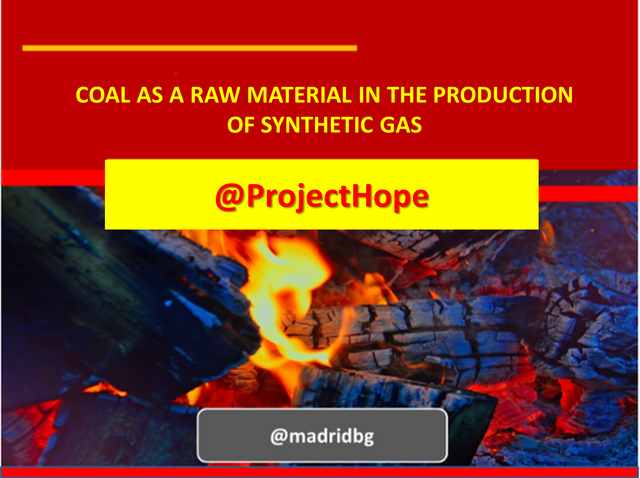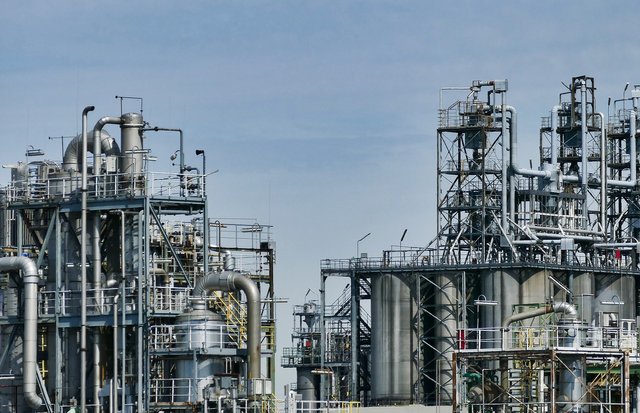
Authored by @madridbg, via Power Point 2010, using public domain images. Gábor Adonyi
Greetings dear readers and lovers of the scientific world, may this delivery serve as a mechanism of socialization that allows us to publicize alternative energy in the face of a society that demands more and more of us in this area.
Therefore, we will be addressing some scientific principles associated with chemistry that will allow us to understand the transformations that coal undergoes and that allow us to generate gaseous compounds useful in the activities demanded by energy use in society.
In this sense, we must remember that our society has entered into a kind of electrical dependence, as a result of the accelerated social and technological growth we have achieved, being the power countries the biggest consumers, an example of this is the United States, which represents 5% of the world population and where more than 20% of the energy of the entire planet is consumed.
Consumption that to date has been satisfied through nuclear fission and the combustion of fossil materials, understood as the product obtained through the decomposition of the remains of plants and animals for periods of time that exceed tens and hundreds of millions of years.

Author: 0fjd125gk87, pixabay
In this way, the use of these fuels has become widespread, primarily because of their efficiency and the economics of the transformation process. However, the uncontrolled use and supply of these hydrocarbons is also currently showing a generalized depletion, with an alarming speed, which has awakened the alarms of society in search of other sources of energy.
Based on the above, coal is presented as a versatile source of energy, chemically this compound that underlies the surface, is constituted as a mixture containing oxygen, hydrogen, sulfur and nitrogen, without forgetting the common hydrocarbons already known today.
This mixture of material constitutes more than 80% of the world's fossil fuel reserves, however, its extraction is extremely costly and causes considerable environmental damage, not to mention the formation of sulfur dioxide, a secondary derivative that can generate an uncontrolled process in terms of acid rain and the greenhouse effect.

Author: Ralf Vetterle, pixabay
Based on the above, it is valid to ask Is it convenient to use this type of material to meet the energy demands of society? although the question is closed due to its dichotomy, let us analyze the scenarios presented by the scientific world as a mechanism to justify the use of coal as a raw material at the energy level..
SYNGAS: SYNTHETIC GAS FROM CARBON GASEOSO

Based on the above, scientific studies have been conducted on the extraction of coal reserves without the aforementioned environmental repercussions, for which they have found an apparently efficient mechanism based on transforming subway coal into gaseous substances that can be easily extracted due to their volatility, a process they have called coal gasification.
Methodologically, the process is based on decomposing coal in the presence of superheated water vapor and air, as shown in the following chemical equation:

If we analyze equation 1, we can see that the product obtained is carbon dioxide and hydrogen, both of which are useful substances that can easily enter a new technological and industrial route and obtain profitability or value from them.
An example of the above is that by means of retro synthesis we can obtain methanol through the dioxide and hydrogen obtained. This substance is widely used in industry and in chemical processing or laboratory work, since its properties allow it to be used as a solvent and raw material for the production of plastic products.

Author: SatyaPrem, pixabay
In this sense, synthetic gas or SINGAS is a good alternative to guarantee the energy demand of society and at the same time we do not cause negative effects on the environment since the sulfur that may be present is eliminated during the coal gasification process.
BIBLIOGRAFÍA CONSULTADA

[1] Ardila y Col. Determination of the gasification potential of coals from the central province of Boyacá for combustion in tunnel kilns..Artículo: Acceso Online
[2] Alvarado Andres. Coal gasification in chile to obtain hydrogen and electricity in a combined cycle power plant..Artículo: Acceso Online
OF INTEREST


Grateful with the community @project.hope and with all the management team of the same one that they motivate us to continue working in a mutual and balanced growth.


This is a very educational piece. Coal has some really good uses in the production of synthetic gas. I also remember when we were taught in school that you can also get coal tar, coke and ammoniacal liquor from coal. Is it amazing?
Excellent read buddy
Downvoting a post can decrease pending rewards and make it less visible. Common reasons:
Submit
Greetings friend, no doubt through science we educate ourselves and how nice to know that you liked these lines of writing.
With respect to coal, its uses are diverse, hence the need to continue taking advantage of it.
Downvoting a post can decrease pending rewards and make it less visible. Common reasons:
Submit
This is the first time I read about "the coal gasification process", and it was very interesting to read, I must say. I had a stereotype that coal causes huge bad effects on the environment, but I believe that science and technology can change our minds on many things as well...
Thanks for sharing this nice educative article :)
Downvoting a post can decrease pending rewards and make it less visible. Common reasons:
Submit
Well you said it my friend, it is not the responsibility of the material, but the misuse that has been given to it, and at this time new alternatives are being sought to improve energy production.
Greetings
Downvoting a post can decrease pending rewards and make it less visible. Common reasons:
Submit